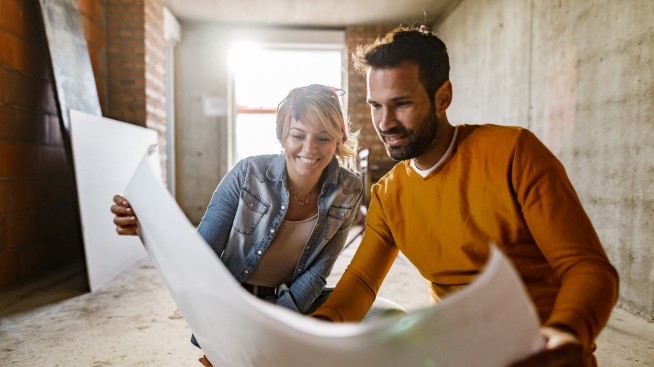Home staging: A seller's guide

Quick insights
- Home staging is the process of enhancing the overall appeal and presentation of your home. It's like giving your home a makeover.
- By presenting your home in the best light possible, you can increase its appeal and potentially captivate the attention of interested homebuyers.
- In today’s real estate market, staging your home can impact your selling experience, from attracting more prospective homebuyers to possibly speeding up the sales process.
Home staging is the creative and transformative art of preparing your residence for open houses to entice potential homebuyers. By strategically arranging furniture and decor, home staging aims to highlight a property’s most appealing features and create an atmosphere of warmth. Staging homes can help increase the desirability of your property and potentially secure a faster sale at a higher price point.
In this article, readers can expect to learn about the benefits of home staging and anticipated costs, along with helpful home-staging tips for optimizing spaces and maximizing the property’s appeal.
What is home staging?
Home staging is the strategic process of preparing a residential property for sale by enhancing its visual appeal and overall presentation. It typically involves arranging furniture, decor and other design elements to showcase the home’s features and create a welcoming environment. Staging a home to sell can be beneficial because it helps potential homebuyers envision themselves living in the property. Staging a home can help differentiate your home from properties on the market and possibly speed up the closing process.
Virtual home staging
Virtual home staging is a modern approach to showcasing properties for sale or rent by utilizing digital technology and instead of physically furnishing a home. Virtual staging typically involves digitally adding furniture, decor and other design elements to photographs or 3D renderings of empty homes.
How much does home staging cost?
Home staging cost can vary widely depending on multiple factors. Generally, staging homes involves expenses such as updating decor, repainting walls, replacing furniture and hiring professional stagers. Homeowners can expect to spend anywhere from a few hundred to several thousand dollars on home staging. Here is a general breakdown of potential expenses:
- Furniture rental: Homeowners may opt to rent furniture to enhance the appearance of their home. Rental costs vary depending on the quality and quantity of furniture needed.
- Decor and accessories: Updating decor and adding new accessories like artwork and throw pillows can contribute to the overall staging cost.
- Repairs and renovations: If your home requires repairs and renovations, like replacing flooring or repainting walls, these costs should be factored into the staging budget. However, you could potentially pass on these costs to the buyer. It may be an additional value-enhancing move on the seller’s behalf.
- Professional staging services: Hiring a professional staging company to handle the entire process, from design to implementation, can incur additional costs.
The cost difference between using a professional staging company and doing the work yourself can be significant. A professional staging company might charge the following costs: an initial consultation fee, staging services, furniture rental and decor updates. DIY home staging might require purchasing or renting furniture, renovating and more effort/time because you are doing all the work alone.
Home-staging tips
Staging a home before putting it on the market can offer numerous benefits to homeowners. Below are some valuable tips for staging your home to sell:
- Declutter: Remove personal items and excess furniture to create a sense of space and allow prospective homebuyers to envision themselves living in the home.
- Clean and repair: Ensure the home is clean and well-maintained. Repair minor problems such as chipped paint and leaky faucets to present the property in its best possible condition.
- Home improvement ideas: First impressions matter. Elevate the exterior of the home by maintaining the lawn, landscaping and exterior paint.
- Add finishing touches: Incorporate tasteful accessories such as rugs, artwork and throw pillows to add more personality to the interior of the property.
In summary
Staging a home is an investment that can potentially pay off in terms of a quicker sale or higher price point. Home staging can provide many benefits to homeowners such as enhanced visual appeal, increased buyer interest and the chance to set your home apart from the competition. Homeowners staging a home to sell can expect to dedicate resources to updating, rearranging or renting staging furniture and preparing marketing materials to attract prospective buyers. Ultimately, home staging can be a game-changer in the real estate market. Embracing home staging as part of your marketing strategy can yield substantial returns on investment and help homeowners achieve their goals.



